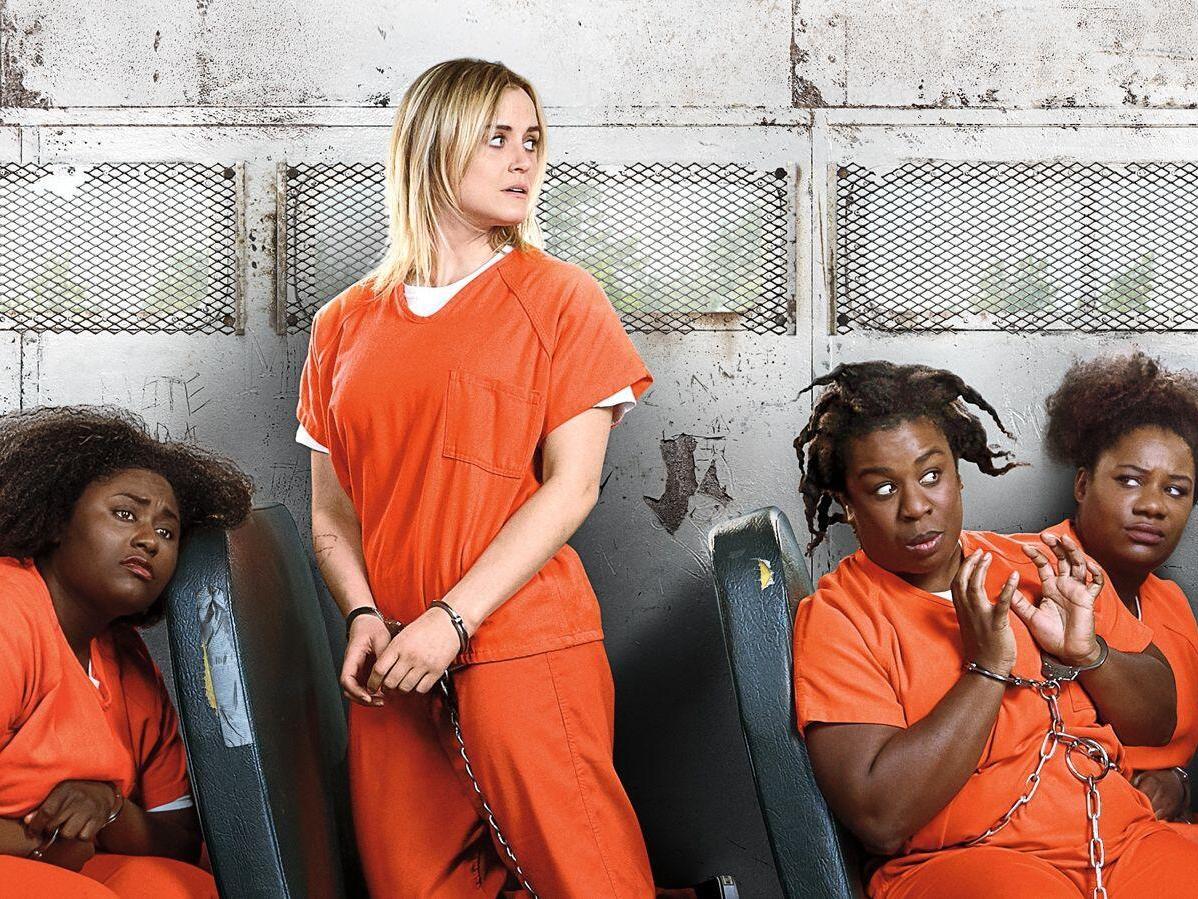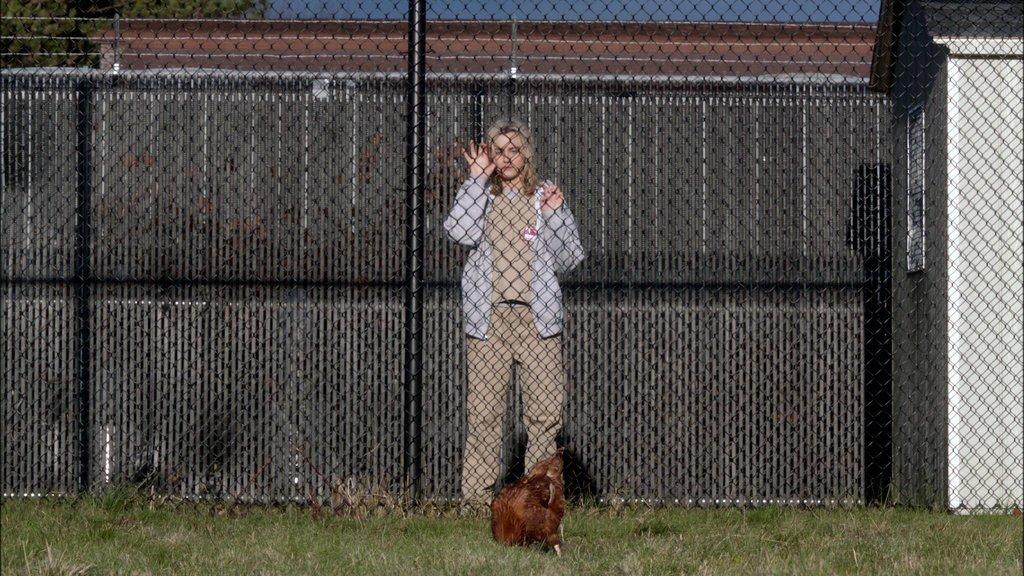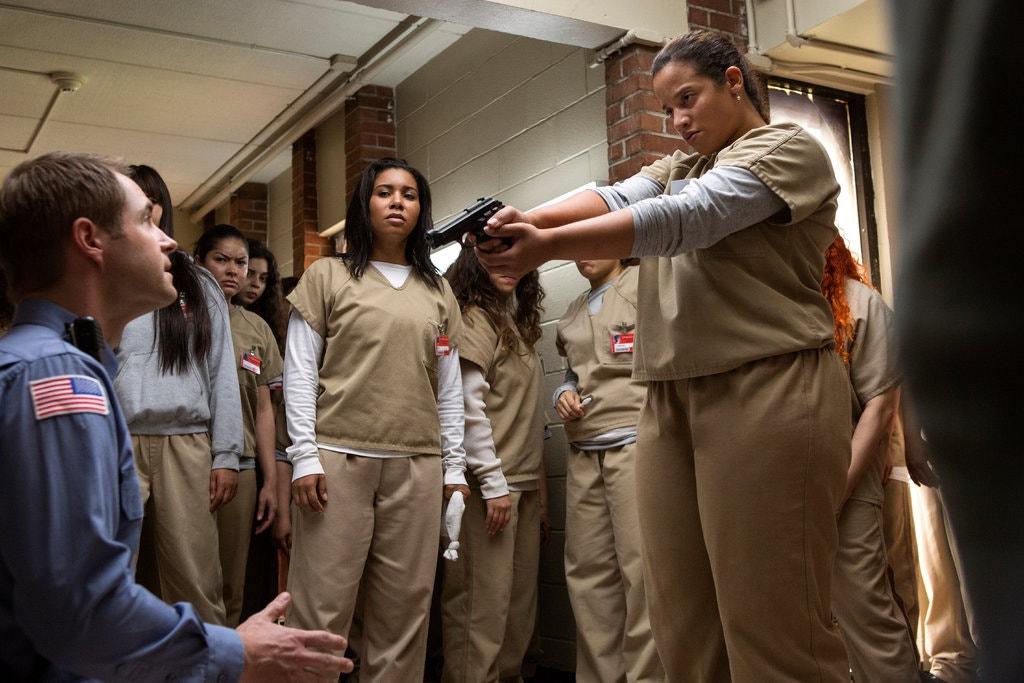The Independent's journalism is supported by our readers. When you purchase through links on our site, we may earn commission.
How Orange Is the New Black set the blueprint for a Breaking Bad and Mad Men-free TV landscape
As the Netflix show's seventh and final season begins, James Poniewozik looks back on the legacy that streaming's first true original will leave behind

Your support helps us to tell the story
From reproductive rights to climate change to Big Tech, The Independent is on the ground when the story is developing. Whether it's investigating the financials of Elon Musk's pro-Trump PAC or producing our latest documentary, 'The A Word', which shines a light on the American women fighting for reproductive rights, we know how important it is to parse out the facts from the messaging.
At such a critical moment in US history, we need reporters on the ground. Your donation allows us to keep sending journalists to speak to both sides of the story.
The Independent is trusted by Americans across the entire political spectrum. And unlike many other quality news outlets, we choose not to lock Americans out of our reporting and analysis with paywalls. We believe quality journalism should be available to everyone, paid for by those who can afford it.
Your support makes all the difference.Orange Is the New Black, finishing its seven-season run today, was big. Big in its reach (presumably, though actual viewing figures for Netflix series are still an occult mystery). Big in its influence, as one of the first genuinely original programmes in the new medium of streaming. Big in its ambitions to represent faces and situations that had been left off TV screens.
But also, it was simply big — teeming, packed to the ceiling with characters and story — in a way that becomes clear when you peek at Netflix’s spoiler list for its final season.
Oh, the things I cannot tell you about this show! Deaths and releases and imprisonments. Reappearances and disappearances. Love and change and illness and new circumstances and more death. A dozen and a half characters are named; far more are implied.
The list does not say anything about the chickens, though. So I will tell you about the chickens.
If you’ve watched Orange Is the New Black, you remember the chicken, in season one, rumoured to be roaming the grounds of Litchfield, the women’s prison at which the series is set. The bird became a legend, a talisman, a symbol of elusive liberty and hope.
In one of many callbacks to the series’s beginnings, the final season features more chickens, being raised as part of a programme for the prison’s “neurodiverse” inmates. One clucker meets a bad end, and Suzanne Warren (Uzo Aduba) becomes convinced that there is a murderer among the flock. She tries separating them, confining them, surveilling them. You can’t be too careful with chickens, she says. They’re “superpredators.”
The prisoner becomes the jailer: OK, it’s not subtle. But the chicken is a pretty apt metaphor for Orange.
Chickens are, after all, confined animals. They are — like the women locked up by a private prison corporation — creatures kept for profit. They are especially associated with the maternal, that is, the egg. They can’t fly very well, which is to say, they are grounded by factors beyond simply their cages. They maintain, within captivity, their own pecking order.
A chicken is not a lofty winged symbol of freedom, like the eagle or butterfly. Yet it scratches out a living. It perseveres. It is, like Orange Is the New Black itself, an odd, sometimes ungainly, yet majestic being.
I’m not sure what to call the current creative era of TV — the one that began, roughly, with the twilight of cable classics like The Sopranos and Breaking Bad and with the dawn of streaming television. The Netflix era? The post-antihero era?

Watch Apple TV+ free for 7 days
New subscribers only. £8.99/mo. after free trial. Plan auto-renews until cancelled

Watch Apple TV+ free for 7 days
New subscribers only. £8.99/mo. after free trial. Plan auto-renews until cancelled
But whatever it is, Orange Is the New Black was the beginning of it.

When it arrived in summer 2013, it was not the first original series to air on Netflix. But it was really the first “Netflix series” in the sense we think of it now. Lilyhammer, in 2012, was a Norwegian import; Arrested Development, earlier in 2013, was a revival. Even House of Cards, for all the attention it got when it debuted a few months before Orange, was a dark drama about a brooding, dastardly alpha male that could have aired on Showtime.
Orange Is the New Black, on the other hand, was an original story, as opposed to Cards, which had been adapted from a British series. (The creator, Jenji Kohan, used Piper Kerman’s prison memoir of the same name as a jumping-off point.)
It had some of the markers of old-school network TV but the specificity and scope of premium cable. It was nuanced and ambitious, but also broad and unpretentiously bawdy. It was dedicated to telling underrepresented stories.
It was something else, and it spent seven seasons establishing exactly what
When Netflix first started making programming, it wasn’t clear what “Netflix shows” would look like, even to the people making them. Arrested Development season four was a four-dimensional web of narrative, within which you might chase a plot thread from episode three forward to episode eight and back to episode one. House of Cards simply approached streaming as premium cable by other means.
Orange was the first series to show us how streaming TV would really work and to teach us how to watch it.
The show looked like traditional TV, even more so than its fancier recent contemporaries in cable. It didn’t aim for the striking images of a Breaking Bad, the lapidary indie-film intimacy of Enlightened or the meticulous design curation of Mad Men.
Its aesthetic and composition were utilitarian, drab even, fitting its institutional setting. It achieved its effects more through conversation than through luminous visuals, much as early TV modelled itself on theatre as opposed to cinema. It even had a TV schedule, of a sort; it came out once a year, always in June or July.
But in practice, in the way the viewer encountered it, it was like little that preceded it. Its distinguishing assets were size and time: The seasons and episodes could be vast, and you could watch them as fast as you wanted.
This was immersive, and it was suited to a story that began with a character being thrown into the deep end. Piper Chapman (Taylor Schilling), a Brooklyn artisanal soap maker convicted on a drug charge, has to suddenly acclimate herself to a sprawling society of women of far less privilege. The enormous catalogue of characters and alliances, which was a barrier of entry with sweeping weekly series like The Wire, was easier to take in when you swallowed it whole, rather than in weekly bites.
But watching a show is only half the cultural experience of TV. The other half is the conversation around it, which changes when you no longer have people watching one show on one channel on one night. The audience would not be aggregated, they would have to find one another — something enabled by social media, which helpfully rose around the same time.
As one of the first streaming phenomena, Orange taught us about this too. Its cultural reach wasn’t immediately apparent; we didn’t, and still don’t, have the kind of independent ratings figures for it that we do for network and cable series. Netflix shows — like Amazon shows, and Hulu shows, and presumably all the shows to come on HBO Max and Disney Plus and Apple TV Plus and so on — would not announce themselves overnight with big Nielsen numbers. They would rise up and percolate outward, like the whispers around a cell block.
Then there was the matter of whose stories Orange told. The era of celebrated TV that preceded it had a preferred protagonist type: mostly white, mostly men, mostly like the sorts of people who ran TV networks. The next era would be open to a wider range of identity, colour, sexual orientation and life experience. And Orange was instrumental in busting those gates open.
At first, it seemed like it would centre privileged, WASP-y Piper as the audience’s guide into a world of black and brown and lower-income women. But she turned out to be the series Trojan Drug Mule. She smuggled the viewer in; once inside, we found a series in which anyone, any episode, could be the lead.
Orange, though it had its share of male guards and significant others, was thoroughly and unapologetically woman-centric. It was polymorphous in gender and sexual identity. Its inmates were transgender, straight, bi, gay, “gay for the stay.”
More than diverse, it was complex. Its prison cliques tended to divide along racial lines, but within those groups were subdivisions, differences that came from generation, from background, from the simple fact that every person is an individual.
The episodes’ structure bolstered that philosophy, interweaving flashbacks into the present-day narrative. We learned how Tiffany Doggett (Taryn Manning), introduced as Piper’s belligerent, Bible-thumping antagonist, had her sense of self-worth destroyed in her childhood; how Dayanara Diaz (Dascha Polanco) evolved from a dreamy, artistic young girl into a hardened felon; how Gloria Mendoza (Selenis Leyva) landed in prison while escaping an abusive relationship.
The series was an illustration of the principle that, when it comes to representing people, quantity sometimes does equal quality. When you have an abundance of characters of different colours, ethnicities and class backgrounds, you can show that none of those groups are monoliths, because no one person has to represent an entire demographic.
In a way, the composition of Orange — a vast ensemble, composed of subgroups that break down into sub-subgroups — was a metaphor for Netflix, and the ways in which it was and wasn’t like mass-media TV of the past. Like the old broadcast networks, it aimed to make TV for everyone. But like the niche cable channels, it didn’t try to make each individual show appeal to everyone. It was macro and micro, a confederation rather than a monoculture.
To tell its story of a new America, Orange used one other old-TV trick: It had a flexible timeline, in which a little more than a year passed in prison time, yet the series ran from the mid-Obama years to Donald Trump’s 2019, with each season reflecting the politics of the outside world.
In the final season, this means a #MeToo story line and a brutal arc about ICE and immigration detentions. In another series, this might seem like a forced attempt to keep up with current events. In Orange, it works; its prison world is one where time moves differently than on the outside, where the names and policies may change, but the essential divide remains between those who get to cross the wall, and those who can’t.
This is a good place to point out that, however heavy the material, Orange is consistently a laugh riot, even when it has involved actual riots.
This is the final way in which the series is a work of this TV era, in which the best work is dominated not by comedies or dramas but by series – BoJack Horseman, Crazy Ex-Girlfriend, Atlanta, Better Things, Transparent, Fleabag – that exist in the uneasy and fertile zone between the two.
Orange defies categorisation more fiercely than most. Literally, in awards competition, it’s been submitted as both a comedy and a drama, underscoring how arbitrary those categories are to begin with.
In part, this is in the show’s creative DNA. Kohan previously made Weeds, a dark Showtime comedy about a suburban widow who takes up drug dealing. In part, Orange is an update of satires like M*A*S*H, which steered as hard into the absurdity of institutional bureaucracy as it did into the tragedy of war.
But its unnerving blend – not “dark comedy” or “light drama” but straight-out hilarity intercut with stark horror – might also be the only honest way to capture the complexities of its subject and its characters.
Some of the inmates are nonviolent offenders; others have killed. Some have suffered bad breaks, abuse or straight-up injustice; others are dangerous, vicious and unrepentant.
Orange extends understanding to all of them (as well as to bullying guards and cynical prison executives) while not simply excusing anyone. If it’s jarring in how it can shift from laughter to shock, slapstick to shivving, it may be because accepting the complexities of real, flawed humans in a flawed system is jarring, too.
This has honestly made the seven years of Orange a tough balancing act. It was strongest in its first four seasons, at the end of which the young, hopeful inmate Poussey Washington (Samira Wiley) was choked to death while being restrained by a guard. Her wrenching, violent end alienated some viewers to whom it prodded at the wounds of real-life police brutality cases, or recalled an ignominious history of series killing off lesbian characters.
The incident was polarising, but it was not handled lightly or forgotten. In retrospect, it was the fulcrum of the series’s whole run, and its repercussions continue through the end of the final season. In seasons five (set during the resulting riot) and six (dealing with the riot’s aftermath), the series tilted more towards the sombre, and the comedy felt more discordant.
Season seven – not to violate the perimeter of Netflix’s maximum-security spoiler list – is, if not the show’s best, a return to form. The centrepiece is the story of Tasha “Taystee” Jefferson (the outstanding Danielle Brooks), facing life in prison for a murder she didn’t commit during the riot. The first person Piper met in Litchfield, Taystee, in retrospect, is the actual aching heart of Orange.

The season steers between nihilism and false hope. It recognises that the weaknesses of the justice system and the forces behind the cycle of crime may be intractable. (In another blunt metaphor, a reform-minded new prison official asks how she can adjust a chair in her office; “You can’t,” she’s told. “It’s broken.”) Yet it holds out the possibility of redemption, small acts of decency and strokes of luck.
Orange Is the New Black is not the best series of its time, but it just might be the most representative of what is best and most exciting about TV during this period of intense change.
Is it comedy or drama? Is it an old-school throwback or a harbinger of the future? Is it a show formed by the imperatives of streaming or a show that created the genre’s rules? The beauty of a series this expansive and polymorphous is that it can be all of these things at once. It is the chicken, and it is the egg.
This article was originally published on The New York Times
Join our commenting forum
Join thought-provoking conversations, follow other Independent readers and see their replies
Comments